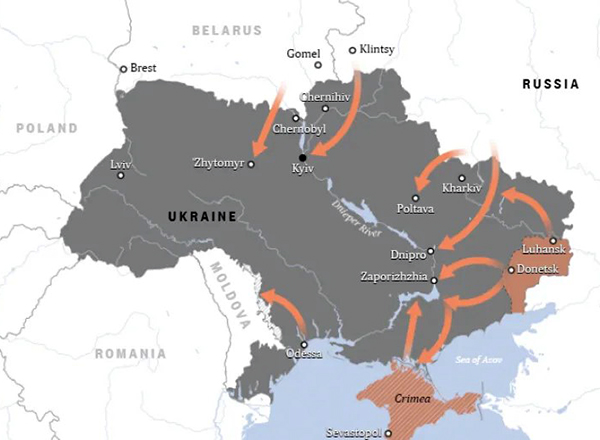India follows an independent foreign policy guided by its national interests.
At UN Security Council, India has abstained on two resolutions on Ukraine in the 15-nation UN Security Council and one in the 193-member UN General Assembly.
In its first statement on the crisis between Russia and the West led by the US over Ukraine, India called for a “peaceful resolution” of the situation through “sustained diplomatic efforts” for “long-term peace and stability” in the region and beyond.
India maintained neutrality during the Russian takeover of Crimea in 2014. Alongside 57 nations, India had abstained from the UN Resolution in response to the Russian annexation of Crimea.
The Indian decision to stay neutral has no doubt irked the US, which is seeking to muster global support for its actions. The US has still to announce its decision on sanctions against India for procuring the S-400 missile system from Russia. It continues to keep the sword dangling.
With key strategic partners on both sides, India could not afford any hasty moves hurting its vital stakes.
Almost 60 per cent of India’s military supplies are Russian manufactured, which means it cannot afford to alienate Moscow, particularly at a time when Indian and Chinese troops continue to be in a stand-off on the eastern border.
India has close defence ties with Ukraine. Ukraine is currently involved in upgrading India’s AN-32 fleet as also providing gas turbine engines for naval vessels.
At the same time, the US and Europe, which are pushing back against Russia over Ukraine, are both important partners from India’s strategic calculus. Many American platforms have been used for reconnaissance and surveillance along the India-China border. Winter clothing for 50,000 troops has been sourced from these western strategic partners.
Another concern for Delhi is the small Indian community in Ukraine, of which 18,000 are students in medical colleges.
Imposition of sanctions on Russia will be a headache as Indian procurement of defence equipment and spares continue, apart from other economic activities. Russia is the world’s third largest producer of oil and second largest of natural gas. Most of its supplies are sent to Europe through oil pipelines, some transiting through Ukraine. Currently it supplies one third of Europe’s natural gas and one fourth of its oil. In case of escalation, these would be impacted, enhancing oil prices.
While India has been increasing its parleys with the US and entering into various pacts and alliances with it, Russia has been cementing its ties with China in a bid to be able to better counter US aggressiveness, should the need for doing so arise. For India, the China threat is perceived to be managed well through a strengthening alliance with the US.
Ties between India and Russia would have to navigate through the tortuous ways of the present scenario, seemingly tempestuous dynamics of international politics.
The primary objective of the China-Russia alignment is and will be undermining American power. The US is essential to anchor any effort to balance China. Without this anchor, there is little hope that China’s domination over Asia can be countered. Anything that diminishes the US strengthens China and vice-versa. Russian interests are thus directly contradictory to India’s because the weakening of the American power that Russia desires will strengthen China, much to India’s detriment.
Formal diplomatic positions with China have not shown much difference. Even on the Quad, India still appears the laggard — it refused to even name Quad in public until after the 2020 Galwan clash.
A China-dominated Asian order, which will be the consequence of Moscow’s efforts to undermine the US, can hardly be conducive to India’s strategic autonomy.
All in all, Indian involvement in any form would not yield any positive result. Neutrality is the best option for the current.


















